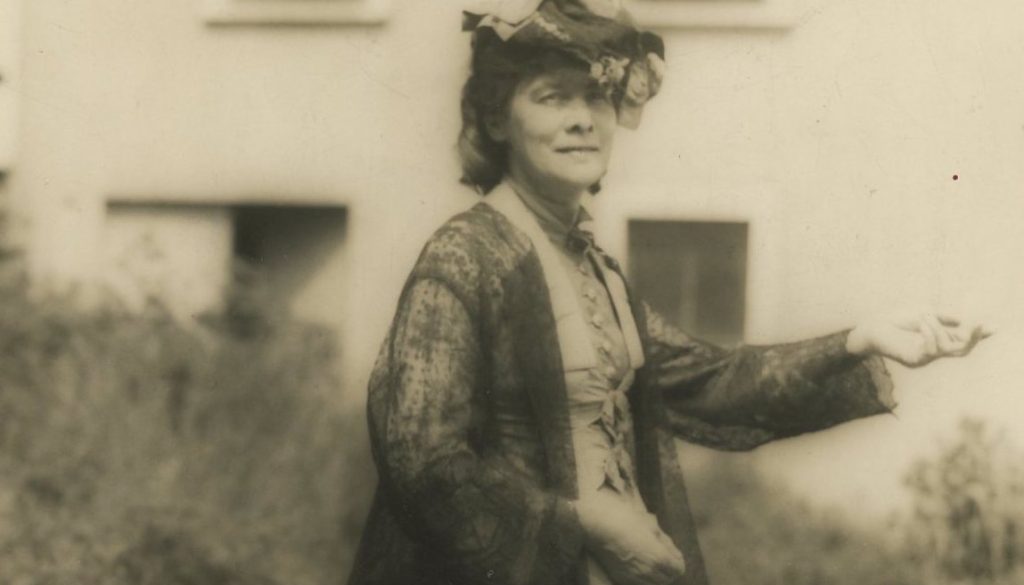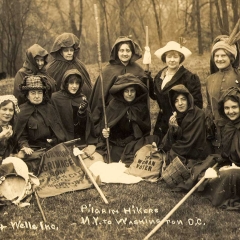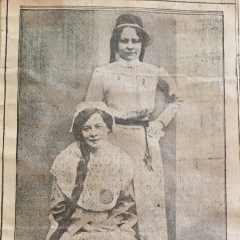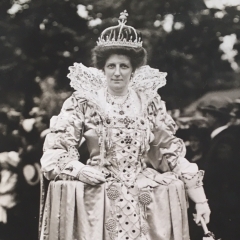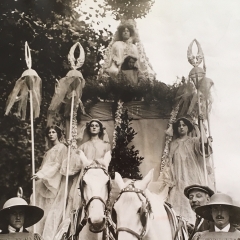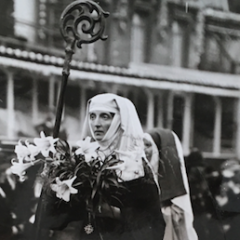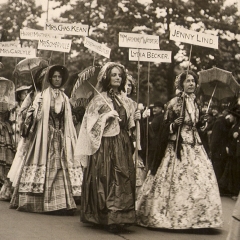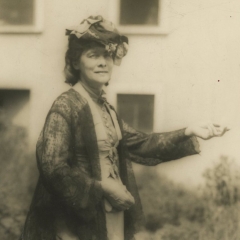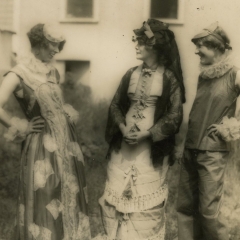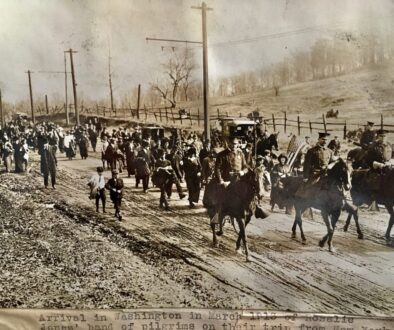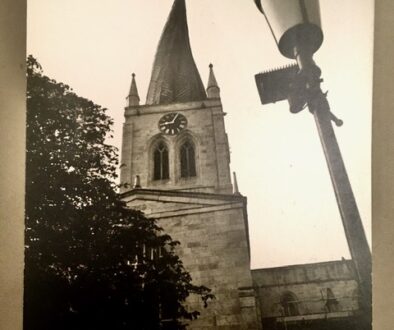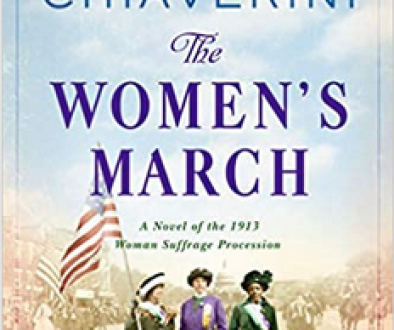Dress Up
Who doesn’t love playing dress up? Well, me for one, but not so our heroine Elisabeth Freeman. She loved fancy dresses and used her fashion sense to draw attention to her cause.
Take the “Pilgrim’s Hike” from NY to DC in February 1911 to join the Women’s March the day before Woodrow Wilson’s Inaugural. (Talk about stealing his thunder! Serves him right for being anti suffrage and racist.) Rosalie Jones, you will recall, had the idea of a “Pilgrim’s Hike” to keep suffrage in the news in every city and hamlet from NY to DC. Presumably, people at the time would have gotten the allegory of “Pilgrims” for the cause like the devout going on a Crusade, although why choose such frumpy costumes—brown wool cassocks? Elisabeth spurned that—good call—in favor of a gypsy outfit; didn’t everyone know that Gypsies telling fortunes tagged along on every pilgrimage?
Seemed like a stretch to me, but the more I thought about it, the cleverer it is. These activists knew the value of a good story that would engage the public over many days and weeks. Hardship, sore feet, even contemplating crossing an icy Delaware like George Washington’s patriots, added to the overcoming-adversity-for-the-Cause theme. Give those embedded journalists something to write about! Headline writing editors were probably in ecstasy.
Elisabeth also knew the value of a unified look. Going to sell papers on Wall Street? Create a gauntlet of young women with identical outfits. Demonstrating at the beach? Something snappy in white perhaps? And, dress everyone in suffrage colors—white, yellow, and purple or white with a sash in those colors for full effect.Another instance of dress up was the Socialist Costume Ball where Elisabeth and Elsie McKenzie won first prize for their Halloway Jail suffragette prisoner and jailer impersonation. Mission accomplished: Picture and story in the paper. By the way, the dresses prisoners were made to wear had an arrow motif, rather than our black and white stripes or more recently orange jumpsuits.
Some of this penchant for dress up came from the British Women’s Social and Political Union (WSPU) and their love of pageantry. Of course the British royalty provided quite a lot of public displays, and the suffragettes mirrored that in their “Coronation March”
with such amazing costumes. They also assembled women writers and equestrians and dressed as famous historical figures like Abbess Hilda. These women had class, and, it goes without saying, the means to pull it off.
Another photo in Elisabeth’s collection shows her in an antique full length gown. The notation on the back of the photo says, “Wearing Aunt Sally’s gown for Beachcomber’s Ball, Provincetown MA.” Interestingly, there’s a picture of her sister Jane, the artist, wearing the same dress. Go Aunt Sally!



